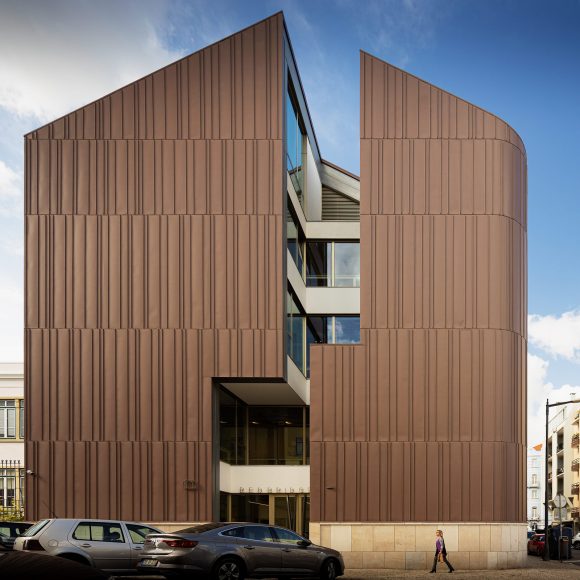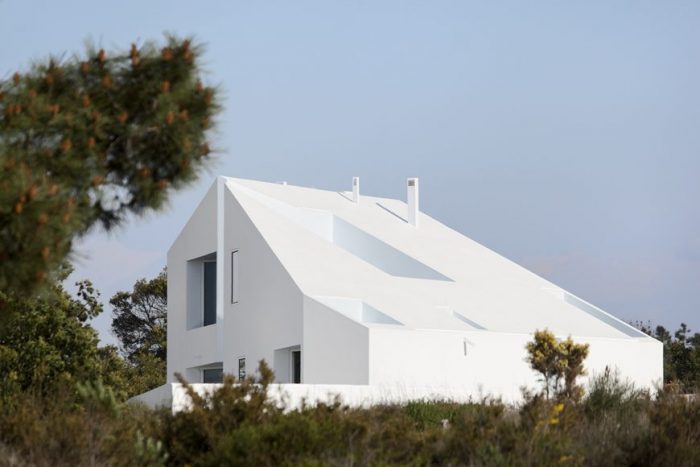
- Permbajtja
- prev
- next
- prev
- next
HIGHLIGHT: ARX PORTUGAL ARCHITECTS
Started in Berlin (1991) by Nuno Mateus and José Mateus, ARX Portugal is an architecture office based in Lisbon.
Our architecture doesn’t follow a lexicon or a stabilized language. In every new project we try to find the “vocables” for a specific language to the new context. More than searching common points between each new project and the previous, our interest focus more on finding differences. It is as if we were always returning to zero. And, at a certain level, that is our conception of innovation.
Evidently this approach also opens up a vast research field. Not having to work within rigid precepts, we search an experimental path where we can test new concepts starting from what interest and fascinates us. Meanwhile, wise seem to us the words of the Brazilian poet and philosopher António Cícero that once said: “what is interesting, it is not much writing something new, but writing something that the reading doesn’t date it.”
The future is always hard to predict, but, com-probingly, after the revolutions, of the disinterest in history and the globalization, there will be certainly a return to the local, to the specific, to the architecture made of small but solid impulses from the things that arrive to us.
Nuno Mateus
Castelo Branco,1961.
PhD in Architecture, FAUTL, Lisbon, 2013.
Master of Science in Architecture and Building Design at Columbia University in New York, 1987.
Founded ARX Portugal Arquitectos, 1991.
Teacher at FAUTL and UAL, Lisbon.
UAL’s Director of the Architecture Department, 2004 -07.
Visiting professor in Universitat Internacional de Catalunya (ESARQ-UIC) in Barcelona and followed Architectural thesis projects at ESAP (Escola Superior Artística do Porto).
Has worked among others with Peter Eisenman in New York from 1987 until 1991 and with Daniel Libeskind in Berlin in 1991.
José Mateus
Castelo Branco, 1963.
Graduated in Architecture, FAUTL, Lisbon, 1986.
Founded ARX Portugal Arquitectos, 1991.
Guest professor at the Instituto Superior Técnico, in Lisbon, he was teacher at the Escola Técnica Superior d’ Arquitectura of the Universitat Internacional da Catalunya (ESARQ-UIC), in Barcelona; at the Instituto Superior de Ciências do Trabalho e da Empresa (ISCTE) and at the Escola Superior de Artes Decorativas de Lisboa (ESAD).
Currently President of the Director’s Board of Lisbon Architecture Triennale, was also Executive Director of the events Trienal 2007 and Trienal 2010.Currently a member of Babel’s Editorial Board.
Was President of the Southern Regional Assembly of the Ordem dos Arquitectos (2008-2010), as well as Vice President of the Direction of the same Regional Section (2005-2007).
Author/coordinator of the magazine Linha (Architecture, Design and Landscape) of the weekly newspaper Expresso. He was also author/coordinator of the two television series Tempo & Traço for SIC Notícias channel.
Jury member in several Architecture prizes.
Projects
Redbridge School

The building site was small and quite peculiar in shape – two opposite fronts of a city block, connected by a narrow strip surrounding an existing villa in the center of the plot. According to city codes the north building, in the largest part of the plot, was to follow the street alignment and to be limited to 4 floors, following the scale of the surrounding buildings. In the south side, narrower and crowded with trees to be preserved, construction was to be isolated, detached from the context. These constraints set the grounds for a conceptual path of two opposite building typologies unified by a common structural system and building materials – the north is part of the city while the south is engaged with the garden.
House in Possanco, Comporta

The implantation terrain of this small house, located in the village of Possanco, sets the transition area between the new urban strip and the protected agriculture zone. An extensive northbound plain ends far away at the Arrabida mountain ridge. Sparse water spots of the river Sado spreading, and the Atlantic Ocean defining the horizon complete this scenario of a bold pictorial expression.
Ílhavo Maritime Museum Extension

In a context of small scattered houses, it is shaped by the interstices of this urban domestic fabric and establishes a new public domain. But in doing so it breaks into two horizontally overlapping bodies searching for a scale of transition. In its proposed matter duality, the white concrete body emerges from the ground and sets the basis for defining a square. The floating black body of metal scales sets the height of the square, in a public urbanity redefined into three dimensions.
Regional Blood Center of O’Porto

This typology is new and hardly tested. It has a great complexity due to permanent risk of blood contamination. Continuous scientific and technological developments force permanent alterations. It is therefore a building with an unstable interior, wich will undergo frequent metamorphosis throughout its life.